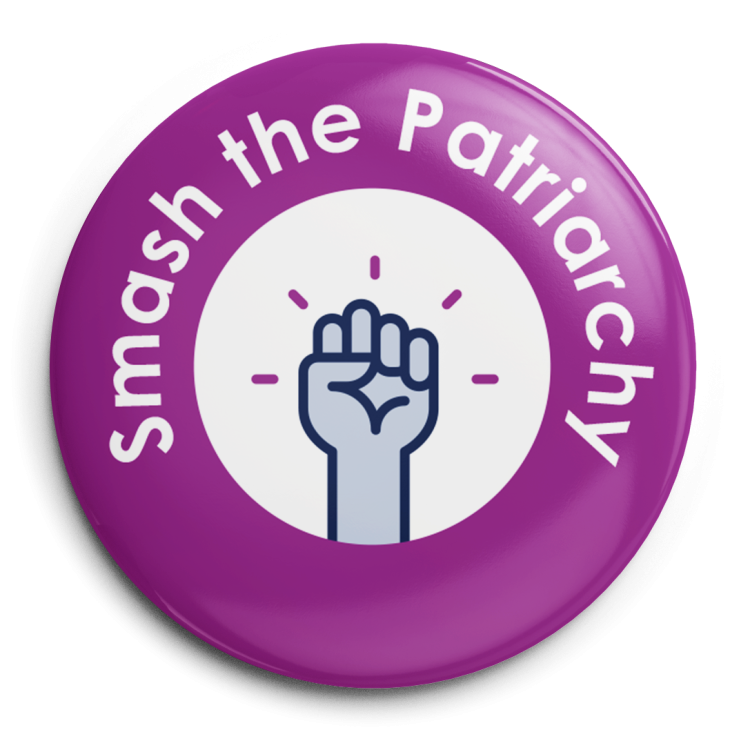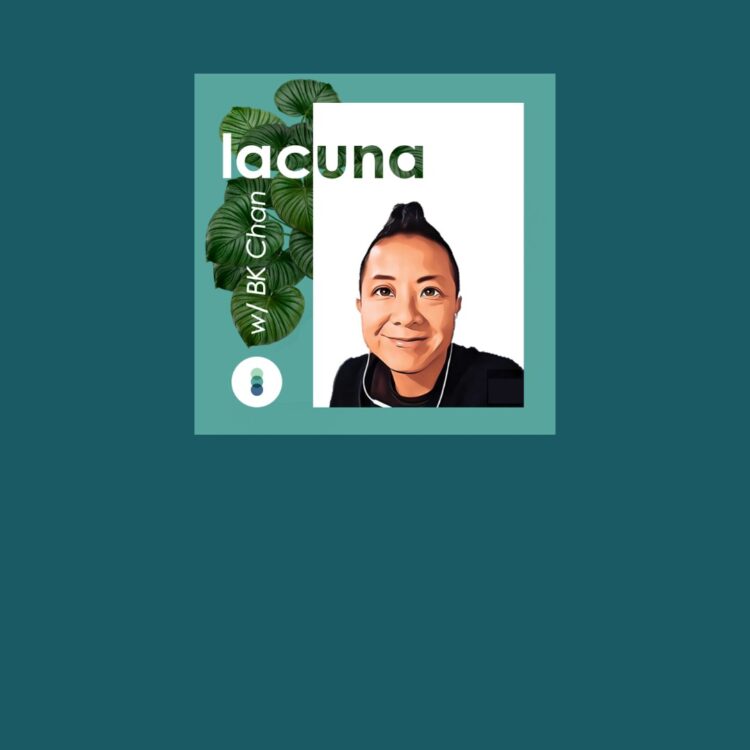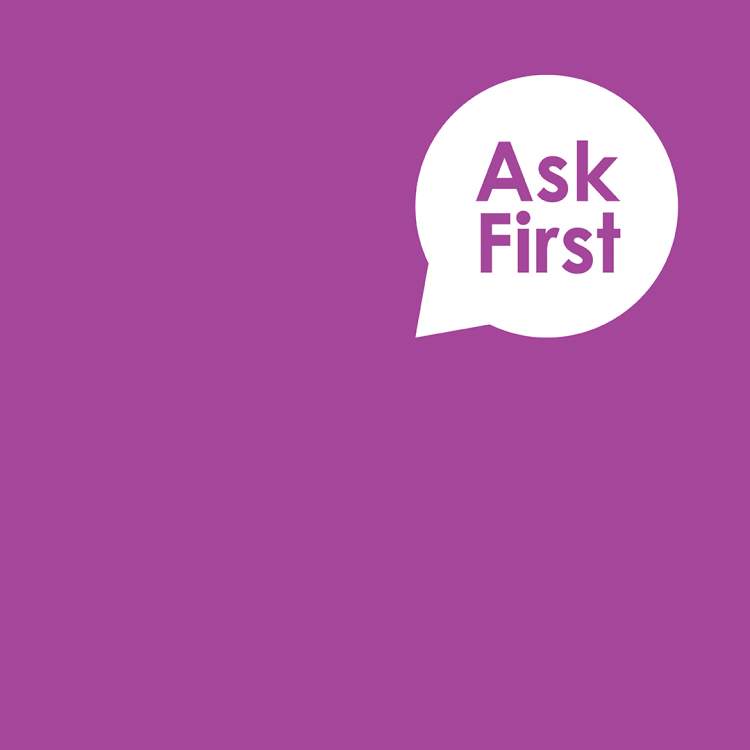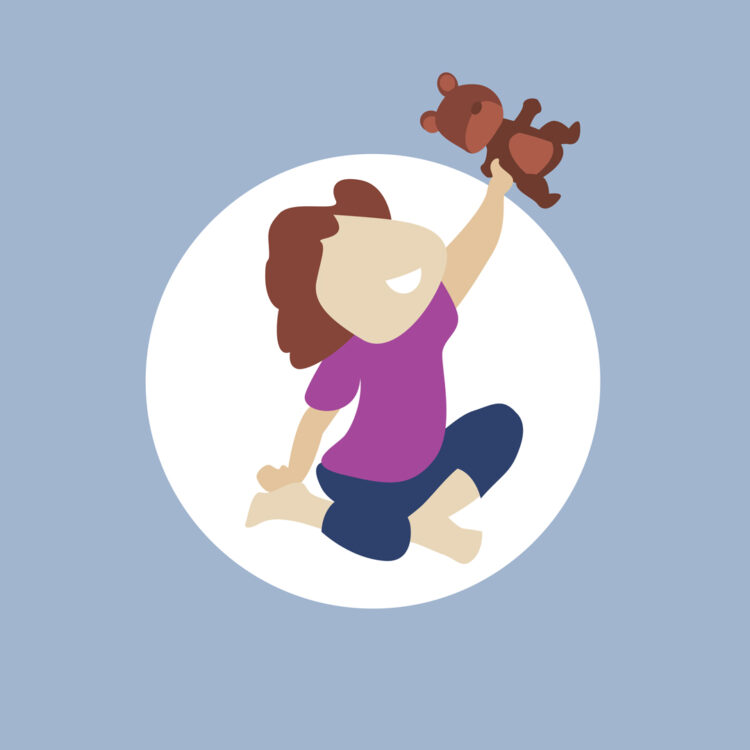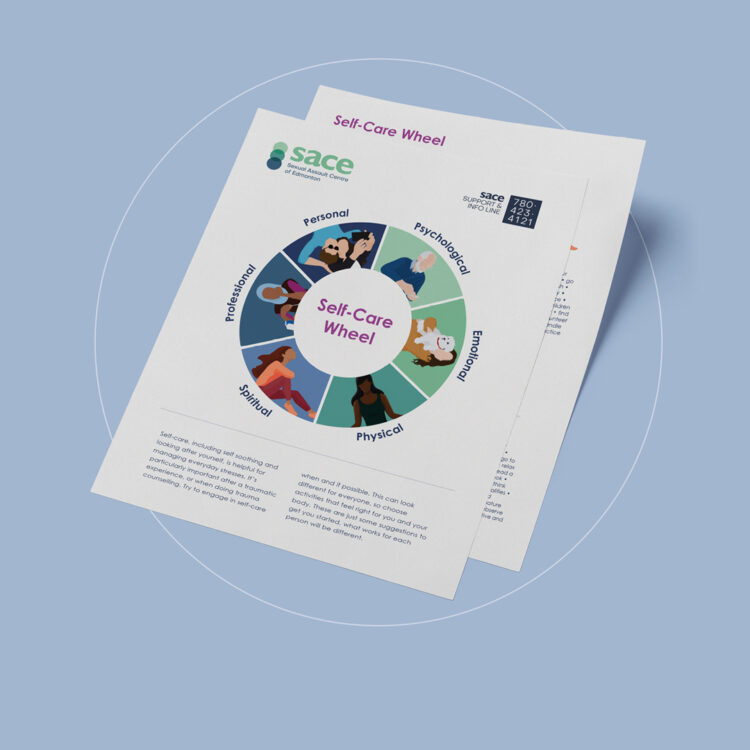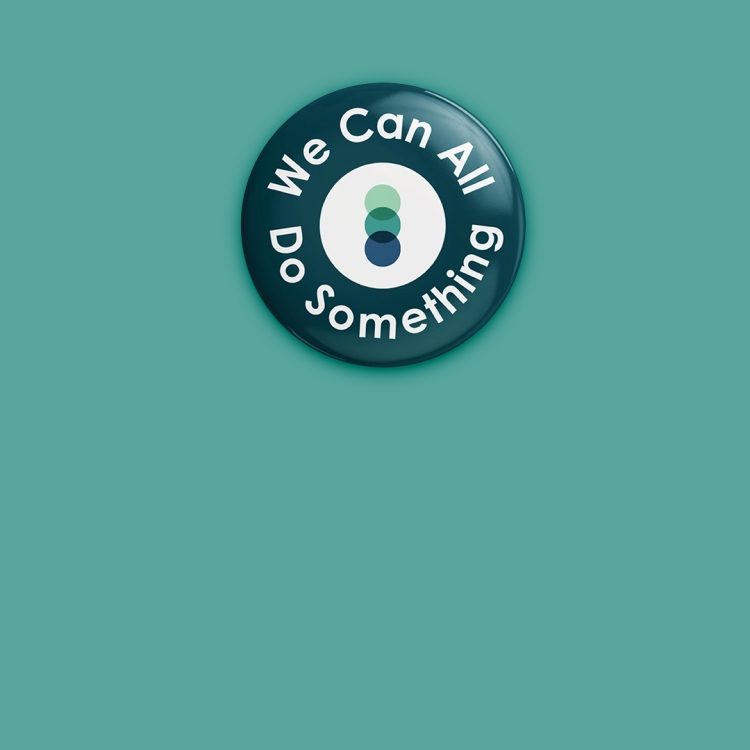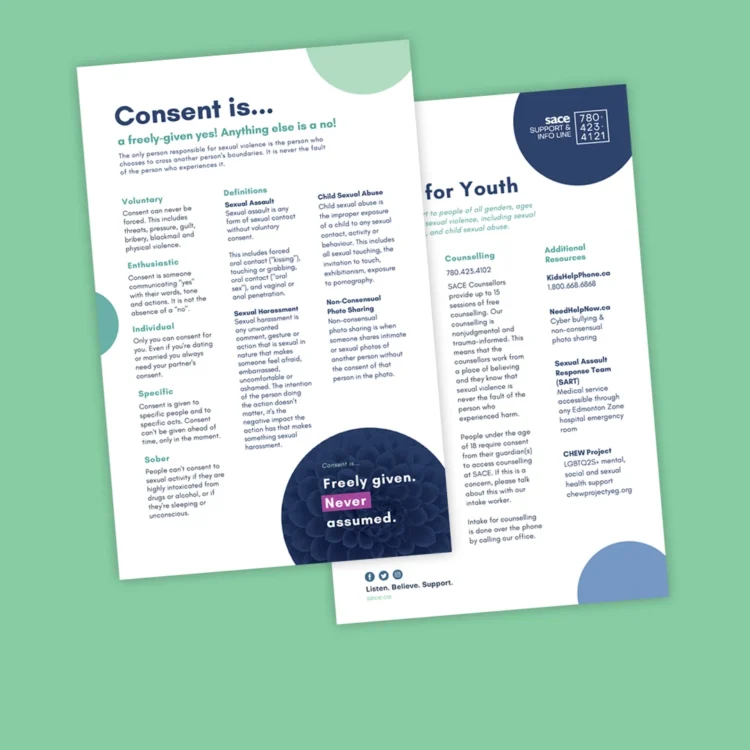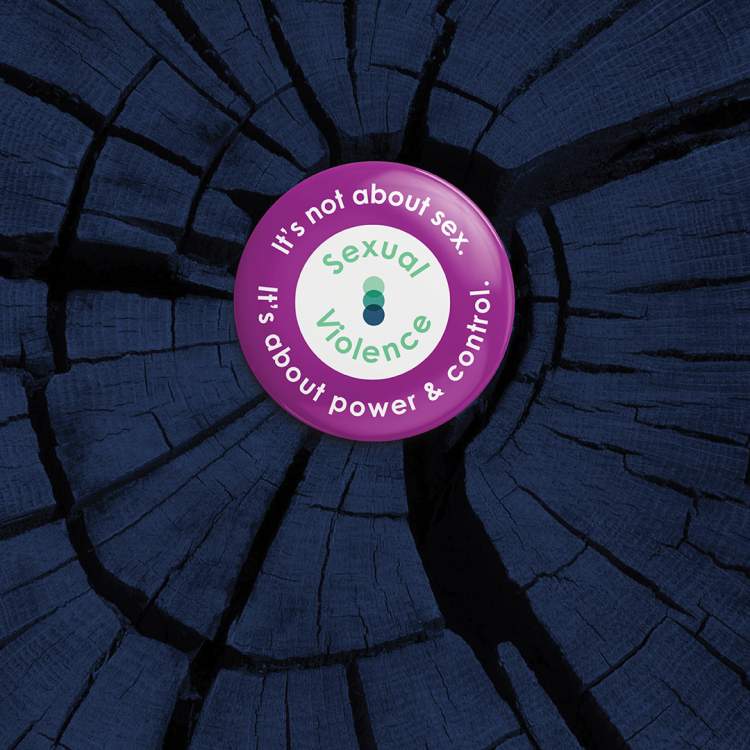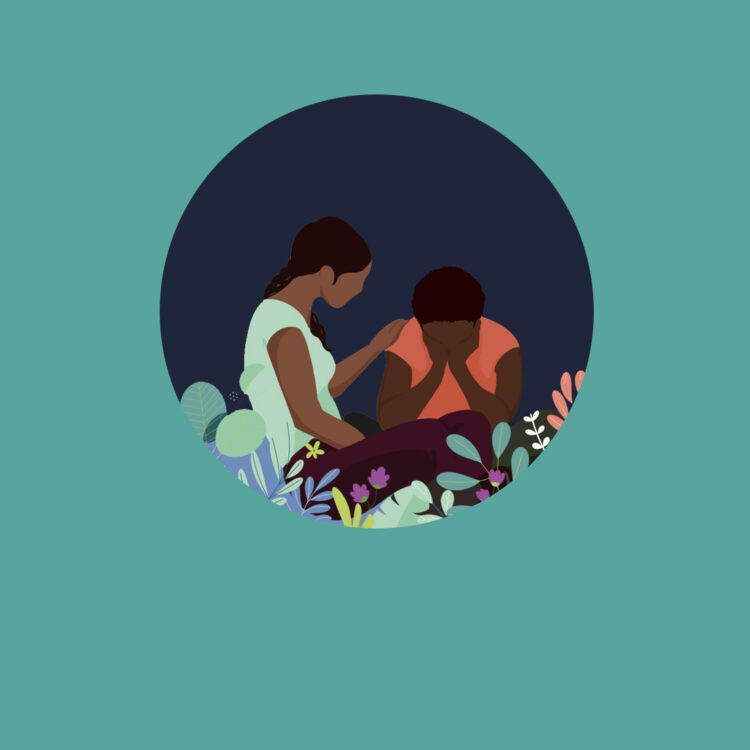In recent years, more and more experts have agreed that to prevent sexual violence we need to engage men and boys.
When considering how masculinity factors into the conversation around sexual violence, it is true that many men experience sexual violence both as children and as adults, and this violence can be caused by people of any gender. It is also true that men are the most likely gender demographic to use sexual violence. To understand why that is the case, it’s helpful to start by understanding the motivations of sexual violence.
Where Does Sexual and Domestic Violence Come From?
The motivations of sexual violence are rooted in power and control, coupled with a sense of entitlement. Sexual violence is not about sexual gratification, but rather about asserting control and dominance over someone in a position of vulnerability. When we as a society push people into positions of vulnerability through oppression and discrimination, we create opportunities for people who choose to cause harm. And when we as a society push people into positions of privilege, we create opportunities for them to cause harm, and have that harm normalized. When a position of privilege normalizes and celebrates power, control, and restricting emotions like empathy, this encourages the abusive attitudes and behaviours that lead to and become sexual violence.
Is There a Position of Privilege In Our Society That Normalizes and Celebrates These Traits?
Many forms of privilege normalize and celebrate some of these traits, like being able-bodied and able-minded (having power and control over one’s body and mind in ways society deems normal) and being wealthy (financial power and control). One form of privilege in our society that celebrates all of the above traits is masculinity, and the system that privileges men and masculinity over women, non-binary folk and femininity is called patriarchy. Patriarchy is a system that assumes men are either more capable of, or more deserving of having power and control in society than women and nonbinary folk. At the same time, patriarchy also harms men, boys, and masculine folks by mandating a social code for men and masculine folk to follow if they want to be accepted and have access to some of that power, control and privilege. Those who do education work around masculinities often talk about The Man Box, a way of illustrating the stereotypical traits society tells people men should be like, a metaphorical box that boys, men, and masculine folk are pressured to fit into.

- Competent (knows what to do, doesn’t need to ask questions)
- Strong
- Tough
- Courageous
- Independent
- Financially successful
- Not feminine
- Restrict emotions (especially empathy to others)
- Very sexually active (and always wants sex)
- Logical
- In control
- Powerful
While many people recognize these conventional masculine traits are limiting and do not accurately describe the lives of men and masculine people, they remain the dominant story from which people of all genders in our society learn about masculinity and what it means to be a “real” man. In many contexts, some of these traits can be positive, for example being courageous, logical, or strong. But overall, living one’s whole life strictly by this code is impossible, because the Man Box is highly restrictive – it doesn’t match up with what it means to be human, and doesn’t account for the diversity so many men and masculine folks embody. But the pressure patriarchy puts on men and masculine folk to comply with these restrictive norms is strong.
Being perceived as weak, as a failure, as too emotional or feminine often means a boy, man, or masculine person has broken the code, and fallen outside the Man Box. This can lead to negative social outcomes like a lack of respect and acceptance, bullying, and violence. Many men and masculine folk can embody some of these traits some of the time, so in order to gain safety and acceptance, this is a route many boys, men, and masculine folk try to take, whether it’s a calculated response or more of a knee-jerk reflex to the pressures and expectations from the Man Box. While this may help boys, men, and masculine folk avoid some of the harms of bullying and rejection, strong attachment to these masculine norms is increasingly being linked to higher rates of depression, self harm, and suicide.
How Does Conventional Masculinity Connect to Sexual Violence?
Conventional masculine traits like being strong, tough, powerful and in control make it very difficult for men to disclose experiences of sexual violence, a type of violence where one’s control is taken away. Some men feel like if they disclose, they would be admitting they failed at being strong, in control or courageous, or are worried that’s what others will think of them. As mentioned above it’s not just men, but people of all genders who are raised in a society with these norms. This leads to men and masculine folk often experiencing victim blaming in a different, gendered way than women and femme folk. Here are some examples of how victim blaming is often gendered:
Feminine:
- “What did she expect being out alone at night?”
- “Why was she wearing that?”
- “She should have said ‘no.’”
- “Why didn’t she call 911?”
- “She should have carried pepper spray.”
- “That’s just what happens in a room with boys.”
Masculine
- “Why didn’t he just fight them off?”
- “He got an erection, he must have liked it.”
- “He should take anything he can get.”
- “So he’s gay?”
- “He should be happy, he got laid!”
- “That’s just what happens in prison.”
It’s notable that there’s more than just gendered dynamics going on with these forms of victim blaming. There are other oppressive dynamics lending themselves to these forms of victim blaming too, like homophobia (“So he’s gay?”), racism, classism, and ableism (“That’s just what happens in prison”), on top of the gendered patriarchal assumptions from the Man Box like men always want sex, men are strong and can always defend themselves, and more. Just like with survivors of all genders, men and masculine folk can also internalize these victim blaming beliefs, which can keep them from opening up about their experiences, and can make the process of healing more difficult.
Another way conventional masculinity connects to sexual violence is it can lead people to use sexually violent behaviour, including sexual harassment and sexual assault. Some of the conventional masculine traits found in the Man Box, such as being very sexually active, in control, strong, tough, and heterosexual, contribute to Rape Culture and feelings of entitlement to women and femme folk. These norms can encourage people to exert power and control over others, especially women, children, and feminine folk. They can also restrict emotional capacities like empathy that may otherwise deter one from causing harm, as well as help one understand the impact of such harmful actions.
Conventional masculine norms like being competent, independent, and tough puts pressure on men and masculine people to not ask for help and not ask questions, even when they’re not sure what to do. These pressures can affect sexual activity, turning it into an endeavour where a “real man” should just know what to do without ever asking what partners actually want during sexual activity. And norms like being successful, very sexually active, and in control can amplify the pain of rejection with the pain of failing at masculinity. This can contribute to a culture of not asking for consent, choosing to risk harming others in order to protect against the possibility of rejection, and the pain that comes with it.
When it comes to the connection between sexual violence and the norms that can contribute to it, we know that women and non-binary folk can and do act out in these ways too. With the harmful conventional masculine norms listed above, the trend is that men will be more likely to tap into these patterns of behaviour than women and nonbinary folk, even though it’s only some men who do it, and even though some women and nonbinary folk do it too. This trend is very apparent in the statistical differences among gender identities of those who use sexually harmful behaviours, with sexual violence generally being caused by men. Patriarchy normalizes this trend of men causing sexual violence with outdated societal messages like “boys will be boys”, “men are naturally more aggressive”, and “men have sexual impulses and cannot control their actions”. These are ways that sexual violence is normalized as routine, understandable, forgivable, or just “not that bad”.
So, if conventional masculine norms are simultaneously harming men’s mental health, making it harder for men and boys to disclose and heal from sexual trauma, and contributing to sexual violence, what can we do to engage men, boys and masculine folk?
What Can We Do?
Definitions
The improper exposure of a child to any sexual contact, activity, or behaviour. This includes all sexual touching, the invitation to touch, exhibitionism, exposure to pornography.
Forcing another individual, through violence, threats (physical or emotional), pressure, deception, guilt, to engage in sexual activities against their will.
A voluntary agreement between 2 or more people to engage in sexual activity. Consent must be clear, informed, voluntary, sober, act and person-specific, ongoing, mutual, active, and come directly from the individuals engaging in the sexual contact. It is impossible to get consent from children, though close-in-age and peer-experimentation exceptions exist for youth ages 12-15.
A society or environment in which obtaining consent and respecting boundaries is the norm, for both sexual contact and everyday activities.
The advocacy of women’s rights on the basis of the equality of the sexes.
An intersectional approach to service delivery that acknowledges that the root of sexual violence is power inequality and works to reduce barriers that groups and individuals face when seeking support and volunteer or employment opportunities.
When an intimate photo or video is shared or taken without the voluntary consent (read consent definition above) of the person in the photo or video (Source: savedmonton.com)
Person-first language recognizes that a person is more than any one experience and that labels are sometimes harmful. People who have experienced sexual violence may use terms like victim or survivor to describe themselves, or they may use words like offender or perpetrator to describe the person who harmed them. Terms that resonate for one person may not fit for another person for a variety of reasons, and SACE supports a person’s right to self-determine their identity and experience. This is why at SACE, we default to person-first language such as “person who experienced sexual assault”, or “person who used abusive behavior”, unless speaking with or about an individual who has identified how they would like their experience to be talked about.
A society or environment whose prevailing social attitudes have the effect of normalizing or trivializing sexual assault and abuse.
Sex trafficking is a form of sexual exploitation. Human trafficking for the purposes of sexual exploitation is a crime and Canada has specific legislation in the Criminal Code (S. 279) and in the IRPA (Immigrant and Refugee Protection Action) (S. 117 & 118) to address all types of human trafficking (sexual exploitation, labour exploitation, organ, debt servitude) There are three elements to constitute human trafficking: Action + Means + Purpose.
Sexual abuse is most often used to refer to Child Sexual Abuse. To learn more about this, read the definition above or our section on Child Sexual Abuse.
Any form of sexual contact without voluntary consent, including unwanted: oral contact (kissing); sexual touching; oral-genital contact; and/or vaginal or anal penetration.
Any actual or attempted abuse of a position of vulnerability, differential power, or trust, for sexual purposes, including, but not limited to, profiting monetarily, socially or politically from the sexual exploitation of another.
Any unwanted comment, gesture, or action that is sexual in nature that makes someone feel afraid, embarrassed, uncomfortable or ashamed. The intention of the person doing the action doesn’t matter, it’s the negative impact the action has that makes something sexual harassment.
Sexual violence is an umbrella term that refers to any form of non-consensual sexual behavior, including sexual assault, sexual abuse, sexual harassment, sexual exploitation, sex trafficking, and sexual violence facilitated through technology.
Explore More Topics:
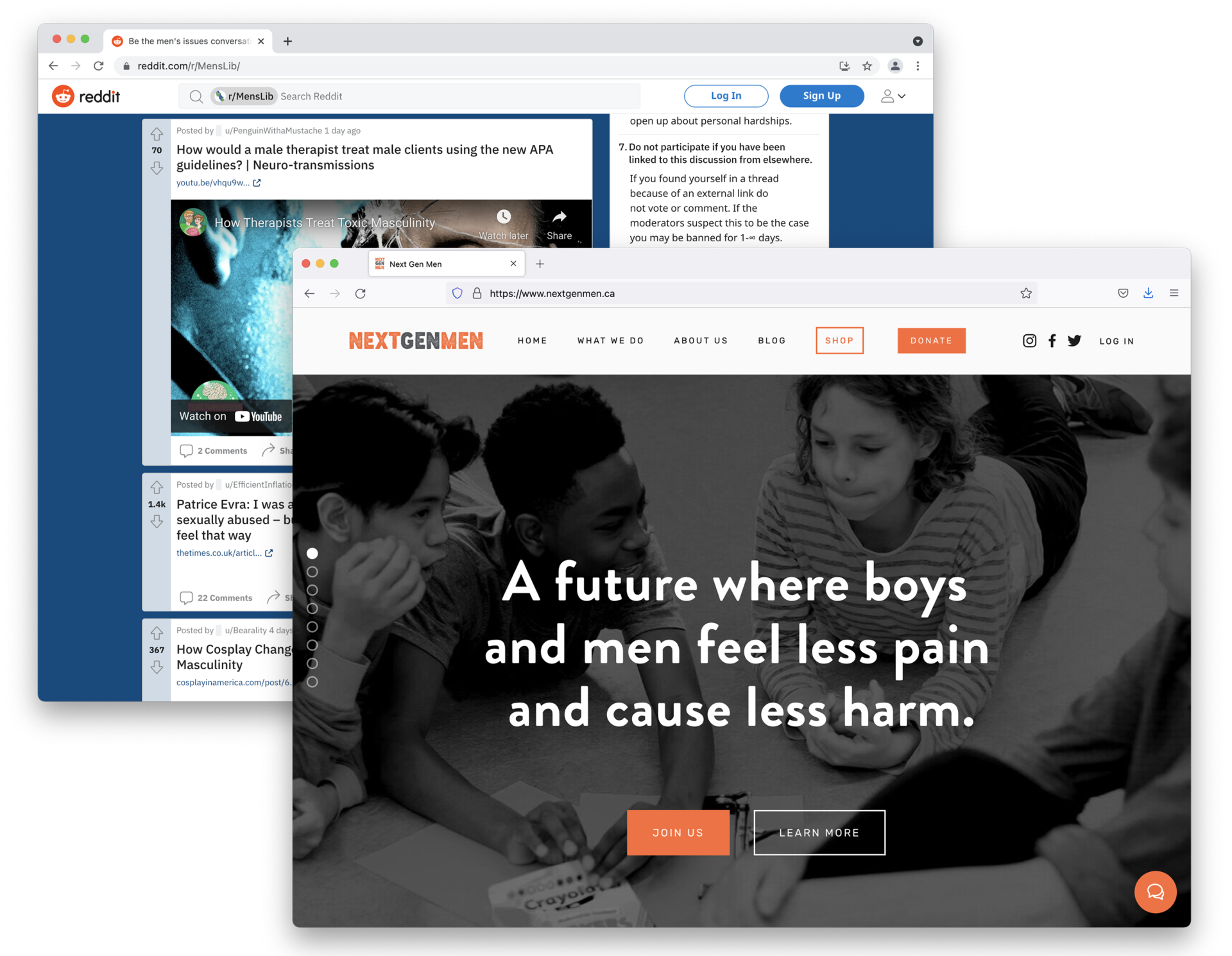
We can encourage men and masculine folk to support each other in moving away from harmful conventional masculine norms. Many communities of men are working towards this goal, including Next Gen Men and r/MensLib
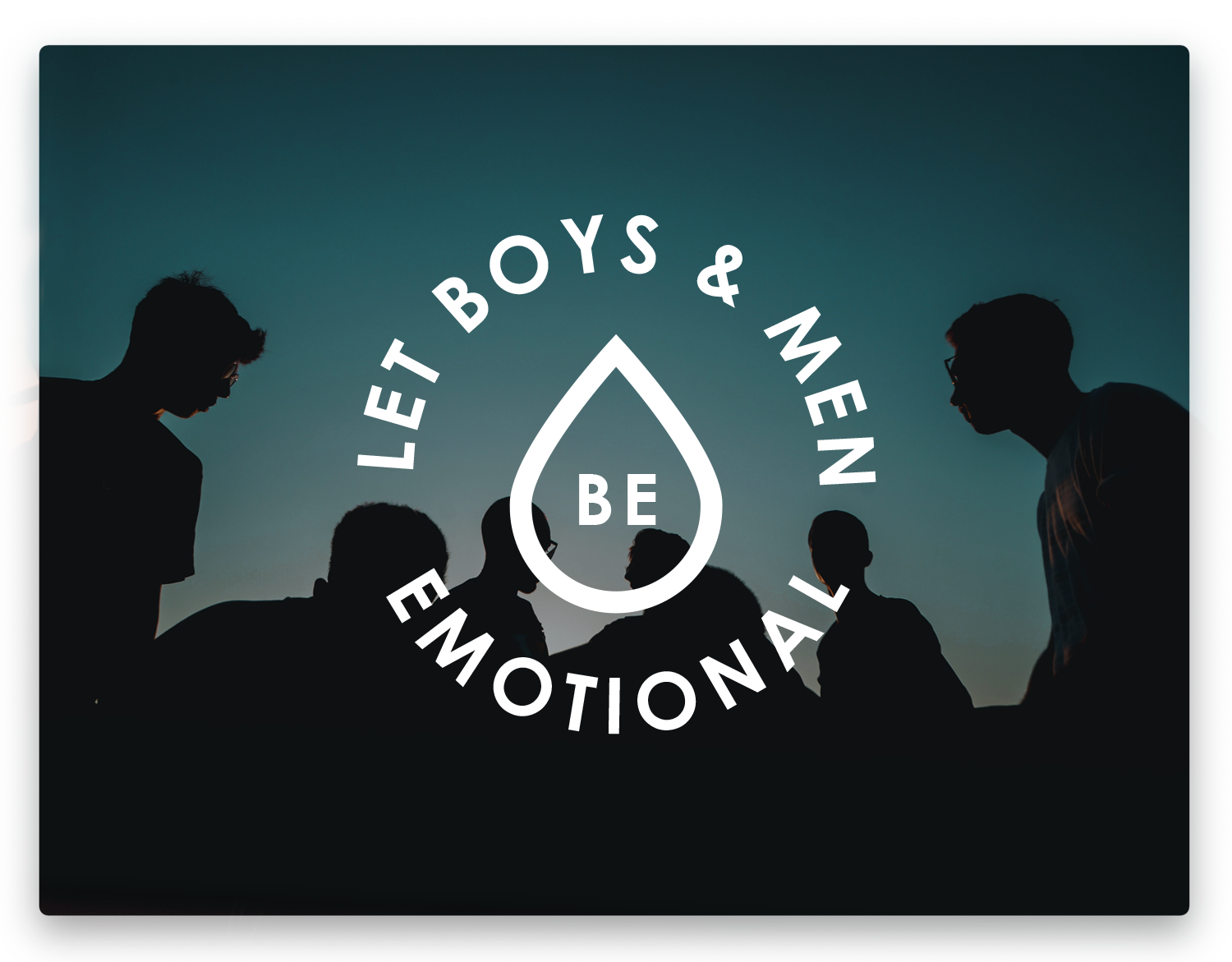
We can allow and encourage men and masculine folk to embody different ways of being a man that move away from the harmful norms cited above. There are just as many ways of being a man as there are men, and we can celebrate positive masculinities and the diversity of positive ways boys, men, and masculine folk can live in relation to themselves and others.
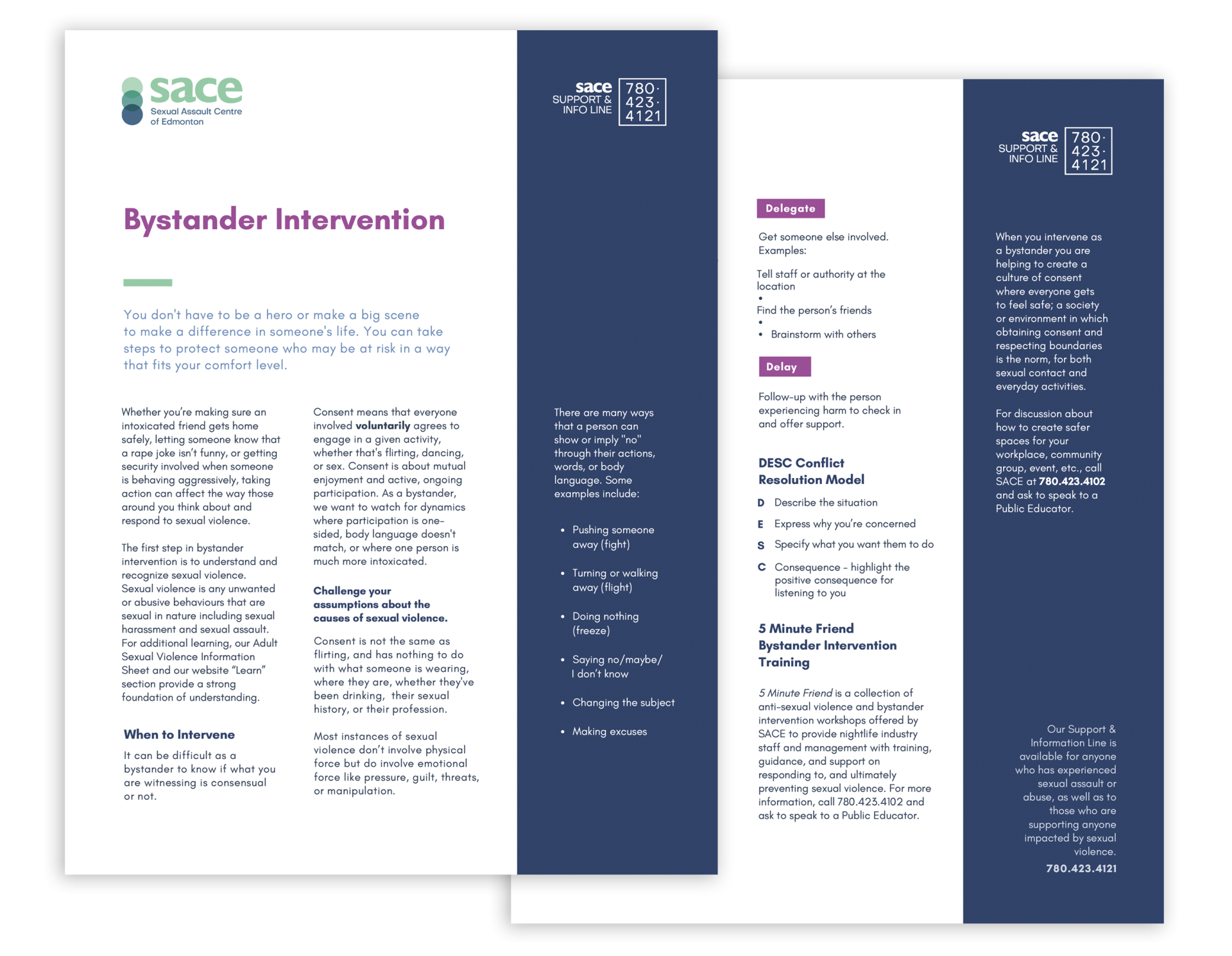
We can practice bystander intervention when we witness harmful behaviour that contributes to Rape Culture.
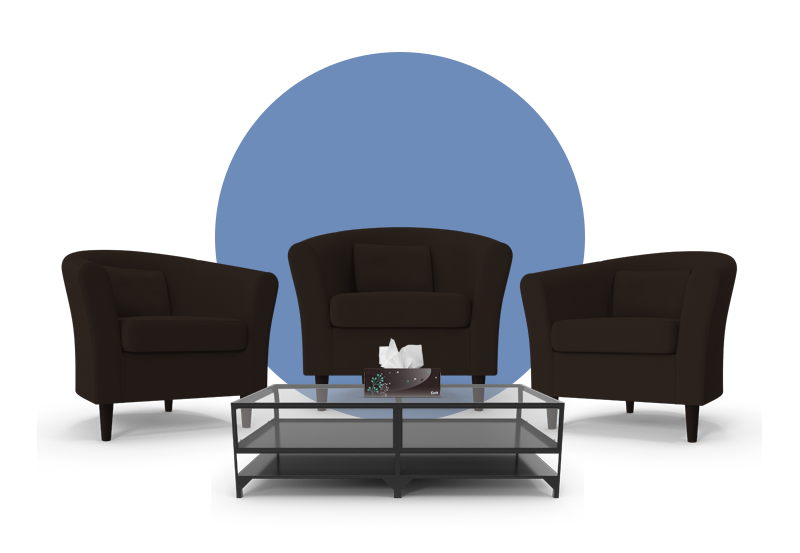
We can provide counselling services for men healing from sexual violence. SACE offers a men’s group (trans-inclusive) and serves male and masculine clients on an individual basis.
We can provide better education to boys and masculine youth. To help our next generation of men and masculine folk learn more about positive masculinities, healthy relationships, consent and sexual health, SACE is now offering WiseGuyz, a gender-transformative healthy relationships program for mid-adolescent boys and masculine youth that aims to reduce sexual and dating violence, improve mental and sexual health, and decrease homophobic attitudes by creating a safer space to critically examine and deconstruct conventional masculine norms.
Learn More
Support for People of All Genders




Edmonton Strategy for Community Mental Health
A community plan to prevent suicide in Edmonton

Eleven of Us
11 Edmontonians attempt or die by suicide per day. Learn the signs, become informed and check-in with loved ones.
Definitions
The improper exposure of a child to any sexual contact, activity, or behaviour. This includes all sexual touching, the invitation to touch, exhibitionism, exposure to pornography.
Forcing another individual, through violence, threats (physical or emotional), pressure, deception, guilt, to engage in sexual activities against their will.
A voluntary agreement between 2 or more people to engage in sexual activity. Consent must be clear, informed, voluntary, sober, act and person-specific, ongoing, mutual, active, and come directly from the individuals engaging in the sexual contact. It is impossible to get consent from children, though close-in-age and peer-experimentation exceptions exist for youth ages 12-15.
A society or environment in which obtaining consent and respecting boundaries is the norm, for both sexual contact and everyday activities.
The advocacy of women’s rights on the basis of the equality of the sexes.
An intersectional approach to service delivery that acknowledges that the root of sexual violence is power inequality and works to reduce barriers that groups and individuals face when seeking support and volunteer or employment opportunities.
When an intimate photo or video is shared or taken without the voluntary consent (read consent definition above) of the person in the photo or video (Source: savedmonton.com)
Person-first language recognizes that a person is more than any one experience and that labels are sometimes harmful. People who have experienced sexual violence may use terms like victim or survivor to describe themselves, or they may use words like offender or perpetrator to describe the person who harmed them. Terms that resonate for one person may not fit for another person for a variety of reasons, and SACE supports a person’s right to self-determine their identity and experience. This is why at SACE, we default to person-first language such as “person who experienced sexual assault”, or “person who used abusive behavior”, unless speaking with or about an individual who has identified how they would like their experience to be talked about.
A society or environment whose prevailing social attitudes have the effect of normalizing or trivializing sexual assault and abuse.
Sex trafficking is a form of sexual exploitation. Human trafficking for the purposes of sexual exploitation is a crime and Canada has specific legislation in the Criminal Code (S. 279) and in the IRPA (Immigrant and Refugee Protection Action) (S. 117 & 118) to address all types of human trafficking (sexual exploitation, labour exploitation, organ, debt servitude) There are three elements to constitute human trafficking: Action + Means + Purpose.
Sexual abuse is most often used to refer to Child Sexual Abuse. To learn more about this, read the definition above or our section on Child Sexual Abuse.
Any form of sexual contact without voluntary consent, including unwanted: oral contact (kissing); sexual touching; oral-genital contact; and/or vaginal or anal penetration.
Any actual or attempted abuse of a position of vulnerability, differential power, or trust, for sexual purposes, including, but not limited to, profiting monetarily, socially or politically from the sexual exploitation of another.
Any unwanted comment, gesture, or action that is sexual in nature that makes someone feel afraid, embarrassed, uncomfortable or ashamed. The intention of the person doing the action doesn’t matter, it’s the negative impact the action has that makes something sexual harassment.
Sexual violence is an umbrella term that refers to any form of non-consensual sexual behavior, including sexual assault, sexual abuse, sexual harassment, sexual exploitation, sex trafficking, and sexual violence facilitated through technology.




